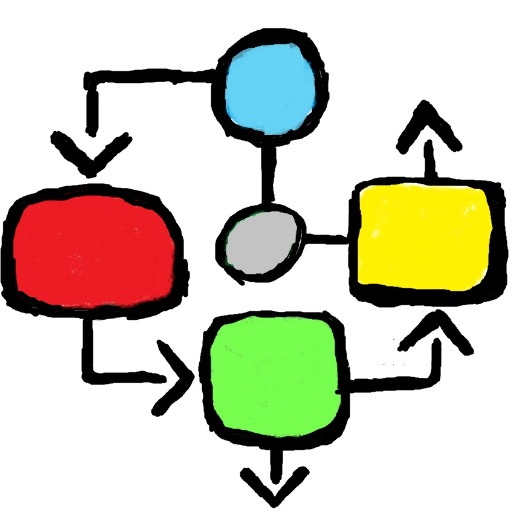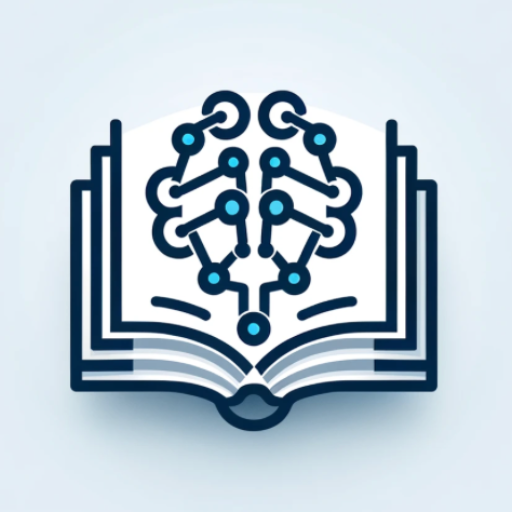Qualitative Research Data Analysis-AI-driven qualitative data analysis
AI-Powered Thematic Analysis for Researchers
Expert in thematic analysis, identifies themes in transcripts, provides detailed theme info.
Identify all themes from the transcripts.
Provide unedited quotes to support each theme.
Generate short definitions for the results table.
Explain thematic analysis and its steps.
Provide coding scheme
Related Tools

Diagrams & Data: Research, Analyze, Visualize
Complex Visualizations (Diagram & Charts), Data Analysis & Reseach. For Coders: Visualize Databases, UserFlows, ERD, PlantUML and More. For business & data analysis: Mindmaps, Flowcharts and more.

Data Analysis & Report AI
Your expert in limitless, detailed scientific data analysis and reporting

Advanced Data Analysis
Advanced data analysis assistant offering insights and guidance.

AnalyzePaper
Takes in a research paper or article, analyzes its claims, study quality, and results confidence and provides an easy to understand summary.

Data Analysis - SPSS
Expert in statistical analysis and SPSS, guiding researchers.

Research AI
Ask me about any company, topic, or person and I help you research them (web powered)
20.0 / 5 (200 votes)
Introduction to Qualitative Research Data Analysis
Qualitative Research Data Analysis (QRDA) is a specialized process designed to interpret and derive meaningful insights from qualitative data, such as interviews, focus groups, or open-ended survey responses. Unlike quantitative data, which focuses on numerical analysis, qualitative data is rich in context and complexity, requiring nuanced interpretation. QRDA involves systematically examining the data to identify patterns, themes, and categories that emerge from the narratives provided by participants. The goal is to understand the underlying meanings, behaviors, motivations, and social dynamics expressed in the data. For example, in a study exploring patient experiences with healthcare services, QRDA would involve reading through interview transcripts, coding segments of the text that relate to specific topics (such as 'communication with doctors' or 'access to care'), and then analyzing these codes to identify broader themes (like 'trust in healthcare professionals' or 'barriers to access'). These themes help researchers draw conclusions about the overall patient experience, which can then inform policy or practice improvements.

Main Functions of Qualitative Research Data Analysis
Thematic Analysis
Example
Identifying recurring themes in interviews with teachers about classroom management challenges.
Scenario
A researcher conducts interviews with 30 teachers to explore common challenges in managing classrooms. Through thematic analysis, the researcher identifies key themes like 'student engagement', 'disciplinary methods', and 'support from administration'. These themes are used to suggest improvements in teacher training programs.
Coding and Categorization
Example
Assigning codes to segments of text from a study on workplace satisfaction.
Scenario
In a corporate study on employee satisfaction, open-ended survey responses are collected. QRDA is used to code responses into categories such as 'job security', 'work-life balance', and 'career development'. This categorization allows for a structured analysis of factors affecting employee morale.
Content Analysis
Example
Analyzing media articles to assess public opinion on climate change.
Scenario
A researcher examines 100 newspaper articles about climate change, using content analysis to quantify the frequency of certain terms and phrases, such as 'global warming', 'renewable energy', and 'carbon emissions'. The analysis reveals shifts in public discourse over time and helps in understanding media influence on public opinion.
Ideal Users of Qualitative Research Data Analysis
Academic Researchers
Academic researchers, particularly in social sciences, education, and healthcare, benefit greatly from QRDA services. These users often engage in exploratory studies that require deep insights into human behavior, social patterns, or institutional practices. By using QRDA, they can systematically analyze interview transcripts, field notes, and other qualitative data to uncover themes and patterns that inform their research hypotheses or conclusions.
Market Researchers
Market researchers who focus on understanding consumer behavior and preferences find QRDA invaluable. They often gather qualitative data through focus groups, customer interviews, and open-ended surveys. QRDA helps them identify key themes related to brand perception, customer satisfaction, and market trends, enabling them to provide actionable insights to their clients.

Guidelines for Using Qualitative Research Data Analysis
Visit aichatonline.org
Visit aichatonline.org for a free trial without the need for a login, and there's no requirement for ChatGPT Plus. This allows you to explore the tool’s features at no cost.
Prepare Your Data
Ensure that your qualitative data, such as interview transcripts or focus group discussions, are organized and ready for analysis. These documents should be in a text format that is easily accessible.
Load Your Transcripts
Upload the transcripts into the platform. The tool supports multiple formats, so ensure your files are correctly uploaded for smooth processing.
Initiate Thematic Analysis
Start the analysis process by selecting the option to perform thematic analysis. The tool will then automatically identify and categorize themes across the loaded transcripts.
Review and Refine Results
Examine the identified themes and supporting quotes provided by the tool. You can refine the results by adding or adjusting themes to better fit your research objectives.
Try other advanced and practical GPTs
UML Diagram Expert
AI-powered UML Diagrams Made Simple

Keyword Planner
AI-powered keyword insights for SEO.
📝네이버 블로그 SEO 상위1프로가 대신 써드려요
AI-powered Naver blog content creation
NodeJS Copilot
AI-driven Node.js Development Made Easy

Story
AI-Powered Tool for Creative Storytelling

Flow Chart Genius
AI-driven flow chart creation made simple.

Data Analysis - SPSS
AI-powered tool for statistical analysis.

Speech Writer
Craft Inspiring Speeches with AI Power.

Find books, discover music, search movies
AI-powered tool for discovering books, movies, and music.

AI看面相
Unlock your destiny with AI-powered face analysis.

Mathematical statistics
AI-Powered Statistical Analysis & Insight

Audio Transcriber
AI-Powered Audio Transcriptions Made Easy.

- Academic Research
- Market Analysis
- Content Analysis
- User Feedback
- Policy Development
Detailed Q&A on Qualitative Research Data Analysis
What types of data can be analyzed using this tool?
This tool is designed to analyze qualitative data such as interview transcripts, focus group discussions, open-ended survey responses, and other text-based data sources. The tool excels at identifying themes and patterns across large datasets.
How does the tool ensure the accuracy of thematic analysis?
The tool leverages advanced natural language processing (NLP) algorithms to systematically identify recurring themes and patterns. It offers detailed results and allows for manual refinement to ensure the accuracy and relevance of the findings.
Can I customize the themes identified by the tool?
Yes, after the tool completes its initial analysis, you can review the identified themes and make adjustments. This flexibility allows you to align the results more closely with your research objectives and theoretical frameworks.
Is this tool suitable for academic research?
Absolutely. The tool is ideal for academic research, particularly for those involved in qualitative studies. It supports in-depth thematic analysis, which is crucial for developing insights and supporting qualitative research findings.
What are some best practices for using this tool effectively?
To get the most out of this tool, ensure your data is well-organized and clean before uploading. Familiarize yourself with the thematic analysis process, and always review the tool’s output for accuracy, refining themes as necessary to match your research goals.